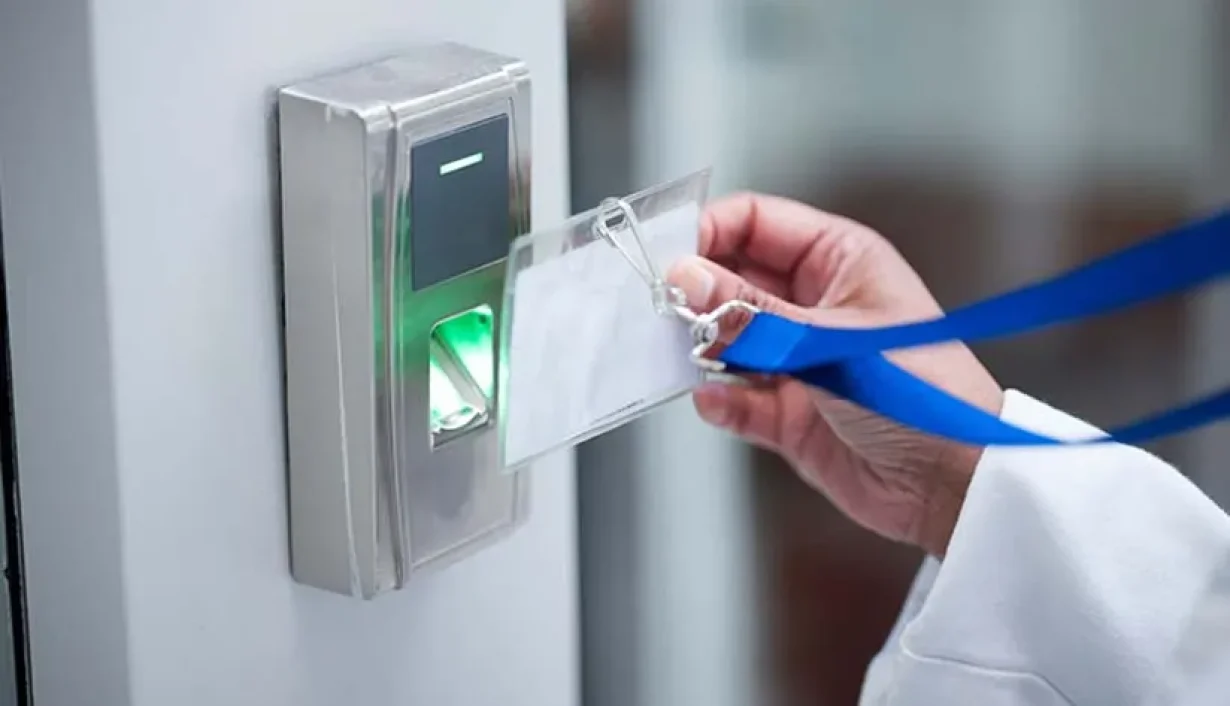
As technology continues to advance, traditional access control systems are increasingly being replaced by more intelligent and efficient alternatives. Earlier systems primarily relied on keys, mechanical locks, or simple magnetic stripe cards. Although these methods provided a basic level of security, they lacked convenience and efficiency. With businesses enhancing their security requirements in response to greater employee mobility and varied office settings, contemporary access control systems are integrating advanced technologies to address these evolving needs.
Modern access control systems must not only deliver robust security to prevent unauthorized access but also facilitate quicker and more convenient entry while maintaining safety. Additionally, as digital transformation and smart technologies become more prevalent, organizations are seeking streamlined and effective access management solutions to enhance productivity and reduce labor expenses. Consequently, there is a noticeable shift towards innovative technologies in modern access control systems.
A prominent technology in this realm is RFID, which has quickly gained popularity for access control due to its contactless functionality, rapid identification, and strong security features. In particular, Vicinity Cards, recognized for their extended sensing range and user-friendly operation, have become a preferred choice for numerous businesses and organizations in the realm of access control. With ongoing advancements in RFID technology and decreasing costs, the adoption of Vicinity Cards in access control systems is accelerating, reinforcing their significance in smart management and security oversight.
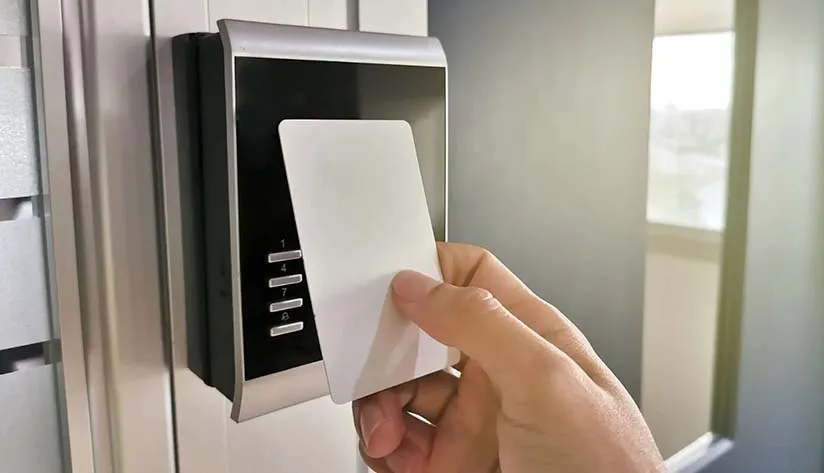
What are Vicinity Cards?
To understand Vicinity Cards, it’s important to first grasp the concept of RFID. RFID, which stands for Radio Frequency Identification, is an automated identification technology that uses radio waves for data transmission and recognition. It facilitates the wireless exchange of information between tags and readers, enabling the identification of objects or individuals. A standard RFID system consists of three main components: the tag, the reader, and the data processing unit. The tag includes a chip that stores data and communicates with the reader using an antenna, while the reader transmits this data to a processing system for further use.
Vicinity Cards represent a specialized implementation of RFID technology. They are specifically designed to enable identity verification from a distance, eliminating the need for physical contact. Unlike traditional contact cards such as magnetic stripe cards or contact IC cards, Vicinity Cards allow users to interact with readers without manual scanning or insertion. This results in a more seamless experience and an extended operational range.
Traditional contact cards typically require direct physical interaction with a reader, such as being inserted into a device or placed in close proximity. Over time, their reliance on physical contact points can lead to wear and tear, diminishing their durability and reliability.
In contrast, RFID cards—including Vicinity Cards—communicate wirelessly with the reader without requiring physical contact. They offer a longer reading range and allow automatic identification within a designated distance, offering enhanced convenience and efficiency over traditional alternatives.
Composition and Functionality of Vicinity Cards
Vicinity Cards operate through the interaction of two primary components: the tag (card) and the reader. These cards rely on an embedded RFID chip and an antenna, which work in unison to facilitate data exchange over extended distances.
Tag (Card)
RFID Chip: The RFID chip integrated within the tag serves as a storage unit for unique identification data. This may encompass details such as the user’s identification number, access permissions, or other relevant information.
Antenna: The antenna is a critical element of the tag, designed to transmit and receive radio frequency signals. In the context of Vicinity Cards, antennas are meticulously engineered to enable communication over greater detection ranges.
Reader
The reader generates radio frequency signals, forming the medium through which interaction occurs. When a Vicinity Card enters the reader’s operational range, its antenna captures these signals and responds by transmitting the stored information back to the reader.
Contactless Communication with a Broader Reading Range
Unlike conventional contact cards, Vicinity Cards use contactless technology for communication. This eliminates the need to insert the card into a device or press it directly against a reader for identity verification. As long as the card remains within the reader’s detection range, it can be scanned and validated automatically, offering greater efficiency for users.
Benefits of Contactless Technology: With no physical contact required, Vicinity Cards only need to be brought near the reader or fall within a specified range for identity recognition and verification. This not only enhances user convenience but also minimizes the risk of wear and tear, extending the card’s longevity.
Extended Reading Range: Unlike traditional contact cards that require direct contact, Vicinity Cards are capable of being read from a distance of several centimeters. This non-contact functionality significantly improves the efficiency of access control systems, particularly in high-traffic environments such as office buildings, hospitals, and schools, where smoother operations and faster throughput are essential.
Advantages of Vicinity Cards in Access Control Systems
As the adoption of smart access control systems becomes increasingly prevalent, businesses and institutions now seek capabilities that extend beyond the mere function of unlocking doors. Their priorities center on enhanced security, user convenience, cost efficiency, and the scalability of these systems to meet evolving needs. In this context, Vicinity Cards, utilizing their distinctive RFID technology, have emerged as a pivotal option within modern access control frameworks.
Enhanced Security
No contact needed, reducing card failure or tampering risks
Stronger encryption technology to prevent unauthorized access
Over the years, RFID technology has seen significant advancements, with the encryption algorithms used in Vicinity Cards becoming more sophisticated, successfully mitigating risks of data theft or tampering. Many of these cards integrate Advanced Encryption Standard (AES) and dynamic authentication methods to provide robust security. Even during man-in-the-middle attacks or instances of signal interference, the system safeguards data integrity and protects user identities through reliable encryption protocols.
Thanks to this enhanced level of security, Vicinity Cards have become a preferred choice in environments with strict security demands, such as financial institutions and government agencies.
Applications in high-security areas (e.g., financial institutions, data centers)
Locations demanding stringent security measures, including financial institutions, data centers, and government facilities, benefit significantly from the implementation of Vicinity Cards. These cards are particularly suited for environments where rigorous identity verification and access control protocols are essential. By employing Vicinity Cards, institutions can bolster security systems by mitigating the risk of unauthorized entry while simultaneously facilitating rapid and precise recording of access–related data.
Improving Convenience and User Experience
Remote identification enhances speed and reduces wait times
The contactless identification feature of Vicinity Cards plays a vital role in improving the user experience. With a recognition range of just a few centimeters, these cards enable seamless identity verification without requiring physical contact with the reader. This greatly accelerates access processes, particularly in busy settings. Whether in office buildings, campuses, or industrial facilities, efficient access control systems help minimize waiting times and boost overall productivity.
Support for multiple devices (like smartphones and smart cards) increases flexibility
Contemporary Vicinity Cards extend their functionality beyond traditional RFID systems by incorporating compatibility with a variety of modern devices, such as smartphones and smartwatches. Leveraging Near Field Communication (NFC) technology, these devices enable effortless interaction with access control readers, thereby offering users increased convenience and flexibility. For example, employees can utilize smartphone applications to access secure areas without the need for a physical access card.
Moreover, organizations benefit from the ability to customize their access solutions by selecting devices tailored to the specific needs of employees and visitors. This adaptability enhances the overall responsiveness and versatility of access control systems.
Adapting to contactless verification improves employee and visitor experience
The remote recognition feature of Vicinity Cards offers both convenience and adaptability, meeting the growing demand for contactless verification. Users simply need to carry the card or link it to a smart device, enabling the system to handle verification automatically. This streamlined process not only enhances security but also minimizes human error and eliminates unnecessary steps, delivering a smoother and more efficient user experience.
Durability and Low Maintenance Costs
Contactless design reduces wear
Vicinity Cards leverage contactless communication technology, which minimizes the need for physical contact and insertion, significantly reducing wear and tear compared to traditional contact cards. This durability extends the lifespan of the cards, decreasing the need for frequent replacements and ultimately lowering maintenance expenses.
Long-term usability without damage reduces maintenance and replacement frequency
Vicinity Cards are generally designed with durability in mind, offering substantial resistance to external interference. This robustness enables them to perform reliably over extended periods, even under varying environmental conditions such as temperature changes and high humidity. When contrasted with traditional contact cards, Vicinity Cards exhibit a notably lower failure rate. This reliability minimizes the need for frequent maintenance or replacements due to damage, leading to considerable cost savings, particularly for large-scale enterprises and institutions.
Scalability and Flexibility
Support for various environments and applications, suitable for everything from small offices to large enterprises
A key strength of Vicinity Cards lies in their scalability. Designed to cater to a wide range of needs, they are equally effective for small offices and large multinational organizations with multiple sites. Whether required for a single building’s access control system or a complex, multi-tiered setup spanning different regions, Vicinity Cards offer versatile solutions. Their adaptability ensures they can handle diverse environments while maintaining top-notch performance.
Integration with other systems, such as attendance systems, parking management, and smart access control
Vicinity Cards stand out as an advanced access control solution, offering functionality that extends beyond basic identity verification. They seamlessly integrate with various enterprise management systems, enhancing their versatility and value. For example, they can link with attendance systems to automatically log employee attendance, coordinate with parking management systems for automated parking space authorizations, and connect with smart access control systems to manage more intricate operational scenarios. By enabling such integrations, Vicinity Cards deliver a robust and adaptable solution for security and enterprise management needs.
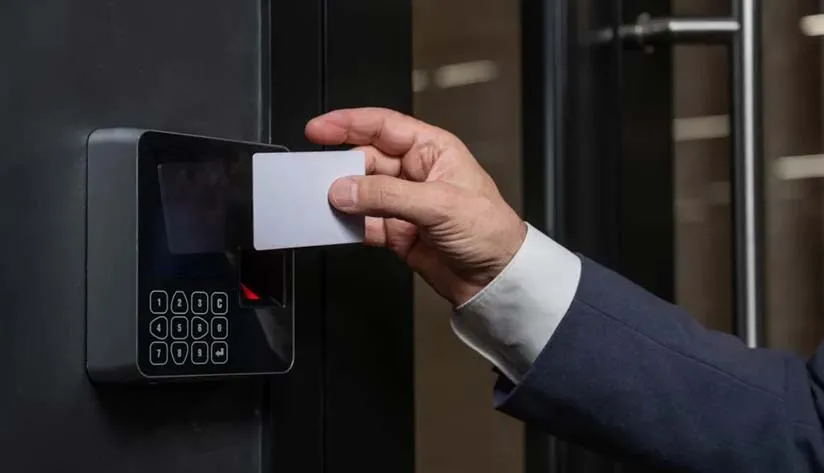
The Technological Development and Innovation of Vicinity Cards
The rapid progress in RFID technology and the Internet of Things (IoT) has driven constant innovation and evolution in the use of Vicinity Cards within access control systems. What began as simple identification tools has transformed into advanced, highly integrated smart access solutions. Over time, Vicinity Cards have been continuously optimized to improve identification accuracy, expand their range of applications, and seamlessly incorporate emerging technologies like NFC and IoT.
Advances in Next-Generation RFID Technology
High-frequency RFID applications enhance recognition distance and accuracy
With advancements in RFID technology, the adoption of high-frequency (HF) RFID tags has become increasingly prevalent in Vicinity Cards. Operating at a frequency of 13.56 MHz, these HF RFID tags are particularly well-suited for applications necessitating short–range recognition, typically confined to a few centimeters. Their ability to deliver high read/write speeds, coupled with their effective communication range, makes them an ideal choice for most access control systems.
The integration of this technology enhances the performance stability and operational efficiency of Vicinity Cards within access control frameworks. This is especially beneficial in high-security environments, such as office complexes and financial institutions, where HF RFID technology demonstrates robust anti-interference capabilities, ensuring reliable functionality in demanding settings.
Integration of NFC (Near Field Communication) technology enhances compatibility with devices like smartphones
The evolution of Vicinity Cards has progressed beyond traditional RFID technology, incorporating advanced features such as Near Field Communication (NFC) to facilitate seamless interaction with access control systems. NFC is a short-range wireless communication protocol operating at a frequency of 13.56 MHz, known for its low power consumption, efficiency, and user convenience. This integration significantly enhances the user experience by enabling compatibility with a range of smart devices, including smartphones and wearable technology.
One notable advancement is the increasing support of Vicinity Cards for NFC-enabled smartphones. By leveraging this compatibility, users can authenticate access by simply bringing their smartphone into proximity with an NFC reader, eliminating the need for physical cards. This streamlined approach not only improves convenience but also reduces the dependence on carrying extra items, offering both functional and practical benefits.
In addition to smartphones, NFC technology extends its versatility to include smartwatches and other wearable devices. By enabling authentication through various smart devices, access control systems achieve greater adaptability and relevance in modern usage scenarios. This multi-device compatibility exemplifies the technological sophistication of NFC-integrated Vicinity Cards, fostering enhanced functionality and flexibility in security and identification applications.
Innovations Combining IoT Technology
How Vicinity Cards integrate with IoT devices to optimize access management and real-time data monitoring
The widespread advancement of Internet of Things (IoT) technology has positioned the integration of Vicinity Cards with IoT-enabled devices as a pivotal frontier for innovation in modern access control systems. By leveraging real-time data exchange and analytical capabilities, IoT devices enhance the efficiency, security, and adaptability of these systems. Specifically, the merging of Vicinity Card functionality with IoT technology facilitates comprehensive monitoring and intelligent management in access control environments.
Real-time monitoring and data transmission: The fusion of Vicinity Cards with IoT sensors, surveillance cameras, and related devices enables access control systems to actively track personnel identities and access records in real time. This data is seamlessly transmitted to cloud platforms for storage and analysis. Such integration transcends the traditional physical hardware-based approach, allowing access control systems to incorporate data-driven strategies. These enhanced capabilities include real-time detection and handling of anomalies, as well as the automated generation of detailed access reports.
Intelligent access management: Supported by IoT infrastructure, access control systems gain the ability to dynamically adapt user permissions based on behavioral and contextual data. For instance, the system can adjust access privileges in accordance with an employee’s hierarchical position, working schedule, or approved visitation zones. This automated customization ensures precise and efficient regulation of access, promoting organizational security while maintaining operational flexibility.
Applications of Automated Management Systems
One of the most noteworthy advancements stemming from the integration of Vicinity Cards with IoT technology is their application in automated management systems. This fusion has enabled features such as dynamic permission customization and real-time access tracking, significantly enhancing efficiency and security. By linking with IoT devices, access control systems can seamlessly recognize and update user permissions in real time, adapting access protocols to align with varying security requirements and time constraints.
Customizable permission control: Administrators can tailor access permissions for individual users or user groups via a unified management platform. For instance, certain areas might be restricted to senior management, while general employees could be limited to shared zones. The flexibility of permission control extends beyond simply granting entry; it can also include time-based restrictions (e.g., access permitted only during designated working hours) and control over connected devices, such as managing smart locks or electronic gates.
Real-time access tracking: The integration of IoT technology empowers access control systems to continuously monitor and record user movements, offering detailed analytics and comprehensive access reports. Administrators can oversee personnel activity at any moment and, in the event of a security issue, trace entry logs to pinpoint exact times and identify the individuals involved. This not only enhances the transparency of access management but also provides crucial evidence to address potential security breaches effectively.

Why Vicinity Cards are Becoming More Popular in Access Control Systems
As society continues to develop and enterprise requirements evolve, the technologies and functionalities of access control systems are undergoing significant advancements. In particular, the increasing emphasis on intelligent management has prompted numerous companies and institutions to adopt access solutions that are not only more efficient but also secure and user-friendly. Among the critical components of modern access control systems, Vicinity Cards have witnessed notable growth and widespread acceptance in the market, owing to their distinctive advantages. According to industry reports, the global market for proximity cards was valued at USD 12.55 billion in 2023 and is projected to expand to USD 21.72 billion by 2031, reflecting a compound annual growth rate (CAGR) of 7.10% over the forecast period from 2024 to 2031. This trend raises an important question: what factors contribute to the increasing prevalence of Vicinity Cards in access control applications?
Demand-Driven Factors
Growing demand for efficient, secure, and convenient access systems in enterprises
As society and technology continue to advance, businesses face an increasing need for access control systems that provide more than just basic entry management. These systems are now integral to enhancing safety, operational efficiency, and overall user experience. While traditional methods like access cards and biometric identification still occupy a portion of the market, they often fall short in meeting the evolving requirements of contemporary office environments. Companies, particularly those managing large-scale operations, high-security zones, or locations with frequent entries and exits, are progressively shifting toward systems that deliver swift, efficient identification and seamless response times.
The Shift Toward Intelligent Management
Modern enterprises are embracing smart, automated solutions designed to streamline management processes. As a result, access control systems must go beyond optimizing entry efficiency to incorporate features like centralized management, remote control, and real-time monitoring capabilities. Vicinity Cards align perfectly with these needs. By offering contactless, high-efficiency identification and compatibility with Internet of Things (IoT) devices, these cards enable cloud-based data synchronization and on-the-spot analytics. This ensures an intelligent, adaptable approach to access management that aligns with the demands of forward-thinking enterprises.
High Security and the Role of Remote Control
Industries requiring heightened security—such as healthcare, finance, and data centers—have traditionally relied on magnetic cards or password-protected systems. However, these outdated methods present considerable risks in today’s security landscape. Vicinity Cards leverage advanced RFID technology and encryption protocols to deliver robust tamper resistance and safeguard against counterfeiting. Additionally, their capability for remote control allows administrators to modify permissions in real time via mobile devices, offering a versatile and dynamic solution for managing access across various environments.
The Rise of Multifunctional Usage Driving Vicinity Card Adoption
With business operations becoming increasingly diverse, the one-dimensional nature of legacy access control systems no longer meets modern enterprise needs. Vicinity Cards cater to multifunctional demands by integrating access control with features like attendance tracking and visitor management. Employees can use a single card not only for authentication but also to log work attendance, manage printing permissions, and verify employee identity. This consolidation of functions streamlines day-to-day operations, improves system efficiency, and enhances the overall workplace experience.
In summary, Vicinity Cards have emerged as a future-ready solution for enterprises seeking smarter, more secure, and multifunctional access control systems. They respond to the growing complexity of business environments while delivering a user-friendly and efficient means of operation.
Competitive Advantages
Compared to conventional contact cards and biometric technologies, Vicinity Cards present notable cost advantages. Traditional contact cards are susceptible to physical deterioration, resulting in elevated maintenance expenses over time. Meanwhile, biometric technologies, despite their robust security features, entail considerable costs associated with implementation and upkeep, particularly in large-scale operations. In contrast, the RFID technology underpinning Vicinity Cards not only proves to be economically viable but also facilitates straightforward implementation by eliminating the need for additional contact hardware. The system’s streamlined installation and configuration processes enable swift deployment with minimal complexity.
Simplified Deployment:
RFID technology significantly simplifies the installation process through its flexibility in setting up card readers across diverse environments without the limitations imposed by physical contact. Moreover, RFID systems offer capabilities for remote configuration and management, thereby minimizing on-site maintenance demands and effectively reducing overall operational expenditures.
Rapid Technological Updates and Enhanced Adaptability:
Vicinity Cards display a high degree of adaptability and upgradability, benefiting from continuous advancements in RFID technology. Their contactless identification capability supports seamless integration with emerging technologies and devices, such as Near Field Communication (NFC), Internet of Things (IoT), and cloud computing systems. This adaptability ensures that Vicinity Cards can efficiently accommodate expansions in enterprise access systems or integration with other intelligent platforms. As a result, organizations can transition smoothly during technological upgrades while maintaining cutting-edge system capabilities.
Robust Compatibility:
Vicinity Cards are designed to function seamlessly with a wide range of devices and platforms, including smartphones and smart wearables, thereby addressing the needs of mobile workforces and remote management scenarios. Furthermore, these cards can be integrated into various operational systems, such as attendance tracking, parking management, and intelligent access control frameworks. This integration enhances system scalability while supporting diverse enterprise requirements.
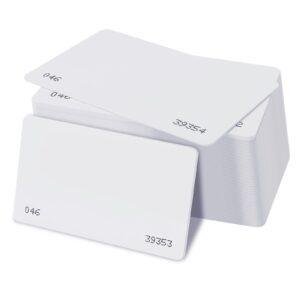
Conclusion
Vicinity Cards offer numerous benefits in access control systems, including heightened security, ease of use, cost-effectiveness, and scalability, making them a preferred solution for modern enterprises. With the ongoing advancements in RFID technology and the rise of the Internet of Things era, their potential applications are expanding rapidly, paving the way for smarter and more automated access control systems.
As innovation in technology progresses, Vicinity Cards are expected to integrate with cutting-edge advancements, providing businesses with more secure and efficient management options. This presents an opportune moment for organizations to upgrade their current access control systems, adopt RFID technology, improve operational efficiency, strengthen security measures, and transition into a more intelligent and future-ready approach.
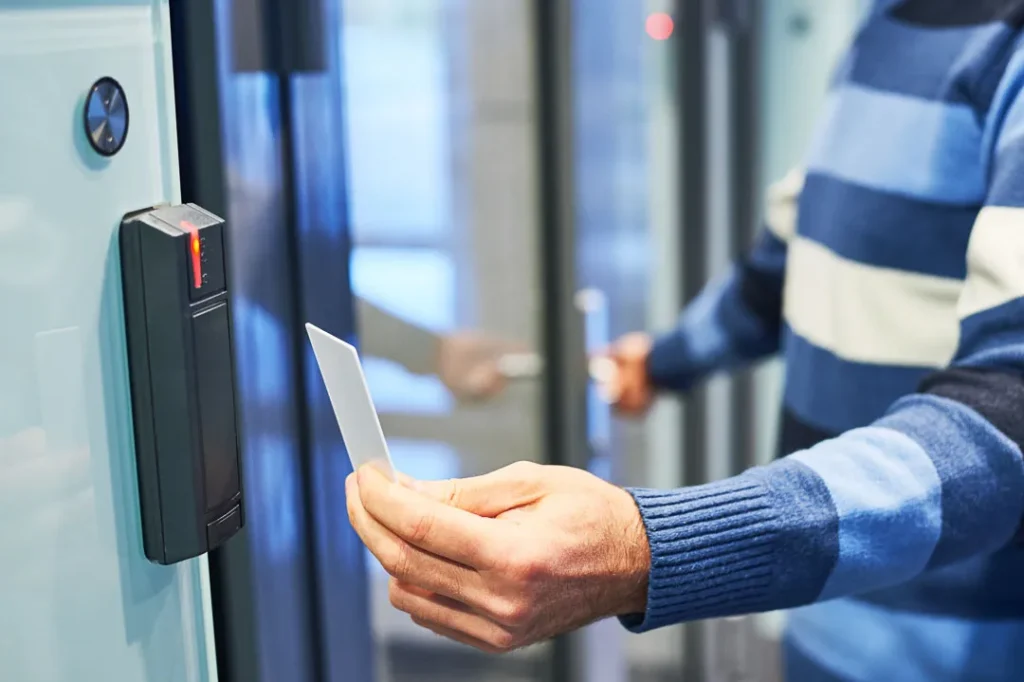
FAQs
What are Vicinity Cards and how do they differ from traditional access cards?
Vicinity Cards are a type of contactless smart card that leverage RFID technology, typically operating at the high frequency of 13.56 MHz. Unlike traditional access cards that require physical contact with a reader, Vicinity Cards function by simply being brought near the reader. This eliminates the need for direct contact, offering users a faster and more seamless experience.
What advantages do Vicinity Cards offer in high-security environments?
Vicinity Cards provide enhanced security by utilizing encryption technology and a contactless design, which minimizes physical wear and reduces susceptibility to tampering—common issues with traditional contact-based cards. These features make them particularly well-suited for high-security environments such as financial institutions, data centers, and government facilities, where robust protection is essential.
Why is RFID technology foundational to Vicinity Cards?
RFID technology underpins the functionality of Vicinity Cards by enabling secure, contactless recognition over longer distances. This not only streamlines user interactions but also ensures reliability and security. RFID’s remote identification capabilities reduce wait times while proving highly effective in applications like access control and attendance tracking.
How do Vicinity Cards work alongside IoT to improve access management?
By integrating with IoT devices, Vicinity Cards elevate access management systems through real-time monitoring, dynamic permission adjustments, and comprehensive data analysis via cloud platforms. This synergy enhances efficiency by automating key processes and enabling agile responses to changing security needs or access patterns.
What makes Vicinity Cards advantageous compared to biometric systems?
Vicinity Cards present a cost-effective and straightforward alternative to biometric technologies. While biometrics provide high levels of security, they often involve significant upfront investment and ongoing maintenance costs. In contrast, Vicinity Cards, powered by RFID, are simpler to deploy, require minimal hardware investment, and incur lower operational expenses, making them a practical solution for large-scale implementations.

RFID Antenna UHF
15-Meter Cable for UHF RFID Fixed Reader
UHF Tag
4″x2″ 860-960MHz UHF RFID Label RFID M4D
UHF Tag
4″x4″UHF RFID Label Alien H3 | ISO18000-6C
RFID Antenna UHF
5-Meter Cable for UHF RFID Fixed Reader
HF Card
ABS RFID KEY-FOB Tag RFID Classic 1K
HF Card
ABS RFID KEY-FOB Tag RFID Classic 4K
HF Card
ABS RFID KEY-FOB Tag RFID Ultralight C
HF Tag
ABS RFID KEY-FOB Tag RFID Ultralight EV1
LF Card
ABS RFID KEY-FOB Tag ATA5577
LF Card
ABS RFID KEY-FOB Tag EM4200
HF Card
ABS RFID KEY-FOB Tag EM4305
HF Card
ABS RFID KEY-FOB Tag RFID TAG 213